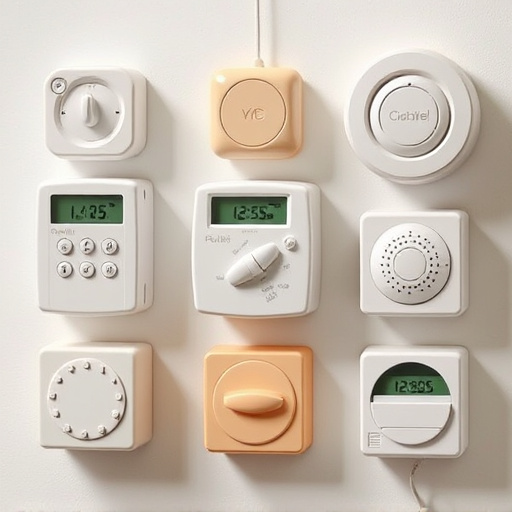Maximum decibel personal alarms (100+ dB) offer robust safety by deterring threats and attracting attention in noisy environments. Strategically placed on the body, these devices emit piercing tones exceeding 120 dB upon activation, ensuring swift response and enhanced public safety, while adhering to local laws governing their use.
Personal protection devices equipped with audible alarms have become essential tools for enhancing individual safety in various situations. This comprehensive guide explores the critical role of these devices, focusing on their ability to deter potential threats through high-decibel alerts. We’ll delve into decibel levels required for maximum impact, review popular options, discuss optimal placement and activation strategies, and examine legal considerations surrounding their use. By the end, you’ll be equipped with knowledge to make informed decisions about personal alarm safety.
- Understanding Audible Alarms: Their Role in Personal Safety
- Decibel Levels: How Loud is Enough for Effective Protection?
- Popular Types of Personal Alarms with Audio Features
- Placement and Activation Techniques for Maximum Impact
- Legal Considerations and Best Practices for Carrying Personal Alarms
Understanding Audible Alarms: Their Role in Personal Safety
Audible alarms play a pivotal role in personal safety, serving as a powerful deterrent and emergency notification system. These devices emit high-decibel sounds, typically ranging from 100 to 120 decibels (dB), designed to attract immediate attention and alert others to potential danger. The maximum decibel level is crucial; it ensures that the alarm is heard even in noisy environments or from a distance, making it an effective tool for personal protection.
When activated, personal alarms with audible signals can disrupt everyday activities and draw the attention of bystanders, who may then intervene or notify authorities. This simple yet effective mechanism has revolutionized personal safety, empowering individuals to protect themselves in various situations, whether while traveling, hiking, or even at home.
Decibel Levels: How Loud is Enough for Effective Protection?
Personal protection devices with audible alarms need to meet certain decibel levels to be effective for safety. The sound intensity, measured in decibels (dB), plays a crucial role in ensuring that the alarm is loud enough to startle potential assailants and attract attention from bystanders. For maximum impact, personal alarms should emit sounds above 100 dB, with many effective devices reaching peaks of 120 dB or more. This level of loudness is key for creating a deterrent effect in diverse environments, from daily commutes to remote outdoor areas.
Beyond decibel strength, the duration and distinctiveness of the alarm are also important factors. A long-lasting, high-pitched sound that stands out against ambient noise will significantly enhance personal safety. Users should look for alarms designed to emit clear, piercing tones that can penetrate even bustling environments, ensuring their distress signals are heard when it matters most.
Popular Types of Personal Alarms with Audio Features
Personal alarms with audible features have gained significant popularity for their effectiveness in enhancing personal safety. Among the diverse range of options available, some stand out as game-changers in self-defense tools. One popular choice is the maximum decibel personal alarm, designed to emit ear-piercing sounds that can startle and deter potential threats. These devices often incorporate bright LED flashlights, adding an extra layer of protection during low-light conditions.
Another widely used type is the audio stun device, which combines a loud alarm with a powerful electric shock. While not intended to incapacitate completely, these gadgets are designed to temporarily disrupt and disable attackers, giving users precious time to escape or call for help. In terms of safety, these personal alarms offer both audible and physical deterrents, making them ideal for various scenarios, from outdoor adventures to everyday urban navigation.
Placement and Activation Techniques for Maximum Impact
For maximum impact, personal alarms with audible capabilities should be strategically placed on the body—typically worn on the wrist or clipped to clothing—to ensure easy access during an emergency. This allows for quick activation when feeling unsafe, with a simple press of a button triggering a loud alarm. Aim for devices that emit sounds exceeding 120 decibels, as this volume level is proven to attract attention and deter potential threats effectively.
Activation techniques should be intuitive and require minimal effort, encouraging users to respond swiftly in dangerous situations. Some models offer various activation methods, such as manual presses or motion-activated triggers. Regular practice of these activation routines can help individuals respond promptly when facing an unexpected hazard, enhancing their personal safety.
Legal Considerations and Best Practices for Carrying Personal Alarms
When considering personal protection devices with audible alarms, it’s crucial to understand the legal considerations and best practices for carrying such devices. Many regions have specific laws governing the use of personal alarms, focusing on public safety and ensuring that their use is reasonable and doesn’t cause unnecessary distress. The maximum decibel level allowed varies by location; for instance, personal alarms should typically emit a sound pressure level (SPL) between 105-130 decibels to be effective while adhering to legal limits.
Best practices include familiarizing yourself with local regulations, ensuring your alarm is clearly marked as a personal protection device, and using it responsibly. Always aim for discreet use in public spaces to avoid startling others unduly. Regularly test the alarm’s functionality to guarantee its reliability in an emergency, and keep it easily accessible for quick deployment when needed.
Personal protection devices equipped with audible alarms play a vital role in enhancing individual safety, especially in potentially dangerous situations. By understanding decibel levels and choosing the right type of alarm, one can ensure maximum impact. Proper placement and activation techniques further optimize their effectiveness. Additionally, being aware of legal considerations when carrying personal alarms is essential for responsible use. Investing in a high-decibel personal alarm (aiming for maximum 120+ dB) can serve as a powerful deterrent, providing peace of mind in today’s world.
